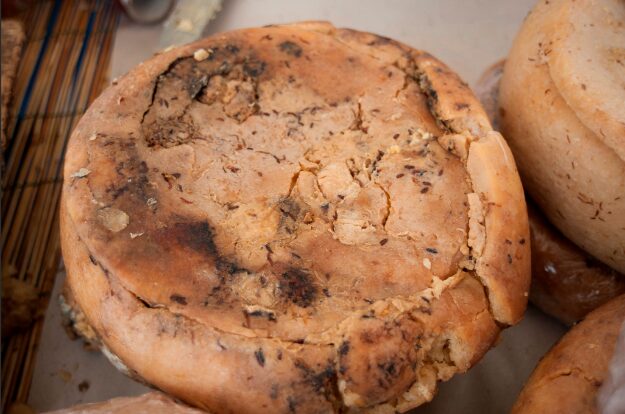Casu Marzu is a strange, Italian cheese. It’s a cultural dish that originates from Sardinia. Made from sheep’s milk and a unique aging process. Instead of letting the cheese sit in an enclosed space to become more flavorful, Casu Marzu is left outside to be swarmed with piophila casei, cheese flies, which lay eggs so maggots can fill the cheese. Giving this cheese the title of “World’s Most Dangerous Cheese.”
What goes on in this process is more complicated than is sounds. It’s not like people wanted the taste of flies in their cheese. What happens over time is the larvae of the cheese flies will eat, digest, and ferment in the cheese. The result is a paste with maggots scattered throughout the cheese.
Why would someone eat this cheese? There are many dangers that come with eating this cheese. The most glaring being these larvae can survive human digestion and can settle in our stomachs causing myiasis. Given that the cheese ferments in an open area for all sorts of possible contact, commonly resulting is fever and vomiting.
The risks for eating this delicacy are known but people still choose to eat it. Mainly being the cheese’s cultural significance. A handful of native Sardinians are known to find ways to, at the very least, try a piece of their heritage. Having the title of “World’s Most Dangerous Cheese” is bound to attract tourists and daredevils from around the world. However, there have been techniques developed that will greatly over the chance of illness from eating the cheese. Common examples are cooling the cheese to slow the maggots and outright suffocating the maggots. Along with a practice for eating the cheese to ensure all maggots have been properly chewed before digestion.
One of the most intriguing facts about Casu Marzu is its illegality. In Italy, and here in America, Casu Marzu is outlawed. Makes sense if it’s called the of “World’s Most Dangerous Cheese.” So, how do people get ahold of it? Funny enough, there’s an Italian black market for this cheese. Making it very expensive with the risk of a €50,000 fine if caught.

